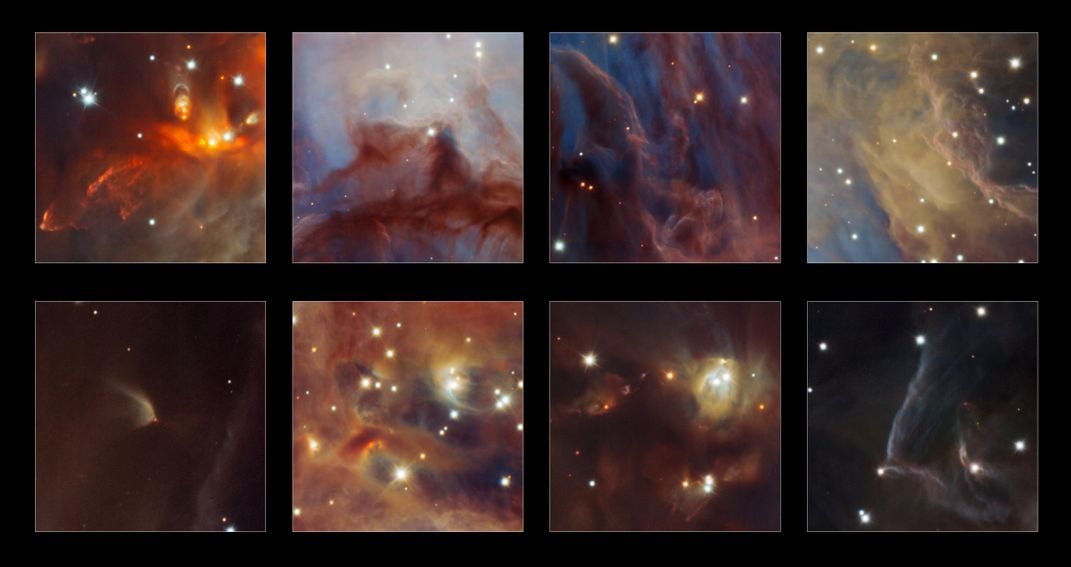Breathtaking New Images Capture Failed Stars and Planet-Sized Objects Inside the Orion Nebula
It’s the deepest look into the nebula ever seen before
/https://tf-cmsv2-smithsonianmag-media.s3.amazonaws.com/filer/cf/fc/cffc37c4-cce5-4f9c-a2ae-93844f5cb644/eso1625a.jpg)
To the naked eye, the Orion Nebula looks like a fuzzy star that is just one point of the sword in the Orion constellation. But a deeper look into its depths reveals striking features about this cosmic nursery. Now, new images taken by the Very Large Telescope in Chile reveal that the nebula is packed full of failed stars as well as a wealth of planet-sized objects.
The Orion Nebula has long been a valuable resource for astronomers seeking to understand how these massive swirling clouds of gas create new stars. But previous attempts to peer inside have been obscured by the hundreds of light years of gas and comic dust in the way. Now they've finally captured just such an image thanks to the European Southern Observatory’s (ESO) advanced HAWK-1 infrared imaging device, Stuart Clark reports for The Guardian.
“Our result feels to me like a glimpse into a new era of planet and star formation science,” lead researcher Holger Drass says in a statement.
While previous pictures of the nebula showcased beautifully-colored swirls of gas, dust, and newborn stars, the new images provide a close look at some of the nebula’s failures. According to Space.com’s Sarah Lewis, the images reveal that the Orion Nebula is packed with ten times as many low-mass, planet-sized objects and stars that failed to shine than researchers once thought.
Stars often form in nebulas as the clouds of gas coalesce and collapse under their own mass, creating a nuclear reaction and giving birth to a star. Seeing a newborn star wink away may be dramatic, but astronomers have a lot to learn from the ones that never lit up the night sky in the first place. As it turns out, the Orion Nebula is packed with brown dwarfs—failed stars that never managed to gather enough mass to reach that critical next step, Josh Hrala writes for ScienceAlert.
"This new image has caused excitement because it reveals [an] unexpected wealth of very-low-mass objects, which in turn suggests that the Orion Nebula may be forming proportionally far more low-mass objects than closer and less active star formation regions," the researchers write in a statement.
In addition to swarms of brown dwarfs, the Orion Nebula also appears to be filled with low-mass, planet-sized objects. This suggests that there is a much lower threshold needed for the gas and dust inside active nebulas like this one to form these sorts of small objects. There could be many, many more planet-sized objects in the universe than scientists once thought, Lewis reports.
None of these objects in the nebula would be habitable, as they are free-floating in space. But the habitable planets may still be out there. Once the successor to the ESO’s Very Large Telescope (the European Extremely Large Telescope, or “E-ELT”) comes online in 2024, the observatory will be able to spot more of these small objects in deep space than ever before—and perhaps, even discover more Earth-like planets in the process.


